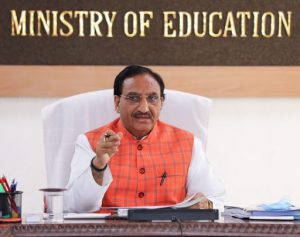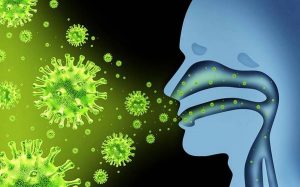Today Current Affairs: 9th April 2021 for UPSC IAS exams, State PSC exams, SSC CGL, State SSC, RRB, Railways, Banking Exam & IBPS, etc
Table of Contents
African Swine Fever:

An outbreak of suspected African swine fever (ASF) has killed 276 domestic pigs in Lunglei district of Mizoram.
- As a part of the preventive measures, the local authorities have restricted the procurement and supply of pigs from and to the affected area and the district beyond.
About African Swine Fever (ASF):
- ASF is a highly contagious and fatal animal disease that infects domestic and wild pigs, typically resulting in an acute form of hemorrhagic fever.
- It was first detected in Africa in the 1920s.
- The mortality is close to 100 per cent, and since the fever has no cure, the only way to stop it from spreading is by culling the animals.
- ASF is not a threat to human beings since it only spreads from animals to other animals.
- According to the FAO, “its extremely high potential for transboundary spread has placed all the countries in the region in danger and has raised the spectre of ASF once more escaping from Africa. It is a disease of growing strategic importance for global food security and household income”.
SARTHAQ:

Recently, the education minister released an indicative and suggestive implementation plan for school education called SARTHAQ.
- Launched in pursuance of the goals of NEP2020 and to assist States/UTs in this task.
- The programme aims at providing an all-around development for the students at the primary and secondary level.
- It will also establish a safe, secure, inclusive and conducive learning environment for students as well as teachers.
- The major focus is to define activities in such a manner which clearly delineate goals, outcomes and timeframe i.e., it links recommendation of NEP with 297 Tasks along with responsible agencies, timelines and 304 outputs of these tasks.”
The plan is being implemented to meet the following aims of NEP 2020:
- It will pave way for curriculum reforms including new national and state curriculum frameworks for school education as well as early childhood care and education.
- The programme will focus on the improvement of the enrollment ratio of children at all levels and a reduction in dropouts and out of school children.
- It will provide access to quality ECCE and Universal Acquisition of Foundational Literacy and Numeracy by Grade 3.
- It will implement vocational education, sports, arts, knowledge of India, 21st-century skills, values of citizenship, awareness of environment conservation in the curriculum.
- It will focus on experimental learning.
- It will also improve the quality of Teacher Education Programmes.
Copyright (Amendment) Rules, 2021:

The Government of India has notified Copyright (Amendment) Rules, 2021.
- In India, the copyright regime is governed by the Copyright Act, 1957 and the Copyright Rules, 2013.
- The Copyright Rules, 2013 were last amended in the year 2016.
- The objective of the amendments is to bring the existing rules in parity with other relevant legislations.
- A new provision regarding publication of a copyrights journal has been incorporated, thereby eliminating the requirement of publication in the Official Gazette. The said journal would be available at the website of the Copyright Office.
- In order to encourage accountability and transparency, new provisions have been introduced, to deal with the undistributed royalty amounts and use of electronic and traceable payment methods while collection and distribution of royalties.
- To reinforce transparency in the working of copyright societies a new rule has been introduced, whereby the copyright societies will be required to draw up and make public an Annual Transparency Report for each financial year.
- The amendments have harmonized the Copyright Rules with the provisions of Finance Act, 2017 whereby the Copyright Board has been merged with the Appellate Board.
- The compliance requirements for registration of software works have been largely reduced, as now the applicant has the liberty to file the first 10 and last 10 pages of source code, or the entire source code if less than 20 pages, with no blocked out or redacted portions.
- The time limit for the Central Government to respond to an application made before it for registration as a copyright society is extended to 180 days so that the application can be more comprehensively examined.
B.1.617: The “Double Mutant” Virus:

The “double mutant” virus that scientists had flagged last month as having a bearing on the spread of the pandemic in India, has a formal scientific classification: B.1.617.
- The variant is common in India and has a couple of defining mutations, E484Q and L425R, that enable it to become more infectious and evade antibodies.
- Though these mutations have individually been found in several other coronavirus variants, the presence of both mutations together was first found in some coronavirus genomes from India.
- Certain variants of the coronavirus, for instance, B.1.1.7 and B.1.351 — have been termed the “United Kingdom” and “South Africa” variant, respectively, because they have mutations associated with large spikes in these countries or reduce the efficacy of vaccines and are termed “variants of concern (VOC)”.
- So far, only three global VOCs have been identified: the U.K. variant, the South African, and the Brazilian (P.1) lineage.
Civil Defence Volunteers:

The Delhi Police recently issued a statement, pointing out that civil defence personnel, also known as Delhi Civil Defence (DCD) volunteers, have no power to stop people using police barricades and prosecute them for violation of Covid-19 appropriate behaviour such as not wearing masks.
- From being lauded for their work during the pandemic to facing allegations of high-handedness, the role of the civil defence volunteers in the national capital has come under intense scrutiny in the recent past.
- One such incident recently turned into a full-blown fistfight between a group of civil defence personnel and the general public near IIT-Delhi.
- In Delhi, these are men and women who work under the command of the district magistrates.
- The overall command lies with the divisional commissioner, to which the DMs report.
- These volunteers are governed by the Civil Defence Act, 1968.
According to the Civil Defence Act, 1968, civil defence is defined as any measure “not amounting to actual combat, that protects persons, property and places in India from hostile attack”.
- The 2010 amendment expanded the definition by including disaster management as one of the responsibilities.
The basic role of the volunteers: - To assist the local administration. During the pandemic, the volunteers assumed the role of frontline workers by way of participating in screening hotspots and distributing food for the needy.
- In recent months, DCD volunteers have also been deployed to ensure social distancing in markets and other crowded places and also at vaccination sites.
India – Seychelles:

PM Modi and Seychelles President jointly inaugurate several Indian projects in Seychelles.
- Prime Minister Narendra Modi has said that Seychelles is central to India’s vision of ‘SAGAR’ – ‘Security and Growth for All in the Region’.
- During times of need, India was able to supply essential medicines and 50,000 doses of Made in India vaccines to Seychelles. Seychelles was the first African country to receive the Made in India COVID-19 vaccines.
- India has contributed towards the construction of the new Magistrates’ Court Building in Seychelles.
- For strengthening the maritime security of Seychelles, India has handed over a Made-in-India Fast Patrol Vessel to the Seychelles Coast Guard.
- India handed over a One Mega Watt solar power plant in Seychelles built with India’s assistance.
- The virtual Summit between the two sides also saw the handing over of 10 High Impact Community Development Projects, HICDPs implemented by the High Commission of India in collaboration with local bodies, educational and vocational institutions.
- Present President of Seychelles, Wavel Ramkalawan is a Person of Indian origin (PIO) with his roots in Gopalganj, Bihar.
2050 Net-Zero Goal:

John Kerry, the US President’s Special Envoy on Climate, is currently on a three-day visit to India. One of the objectives of Kerry’s visit is to explore whether India can agree to the possibility of pledging itself to a 2050 net-zero goal.
- Net-zero, which is also referred to as carbon-neutrality, does not mean that a country would bring down its emissions to zero.
- Rather, net-zero is a state in which a country’s emissions are compensated by absorption and removal of greenhouse gases from the atmosphere.
- Absorption of the emissions can be increased by creating more carbon sinks such as forests, while the removal of gases from the atmosphere requires futuristic technologies such as carbon capture and storage.
- This way, it is even possible for a country to have negative emissions, if the absorption and removal exceed the actual emissions.
- A very active campaign has been going on for the last two years to get every country to sign on to a net-zero goal for 2050.
- It is being argued that global carbon neutrality by 2050 is the only way to achieve the Paris Agreement target of keeping the planet’s temperature from rising beyond 2°C compared to pre-industrial times.
- Current policies and actions being taken to reduce emissions would not even be able to prevent a 3–4°C rise by the turn of the century.
India, the world’s third-biggest emitter of greenhouse gases, after the US and China, is the only one opposing this target because it is likely to be the most impacted by it.
- Over the next two to three decades, India’s emissions are likely to grow at the fastest pace in the world, as it presses for higher growth to pull hundreds of millions of people out of poverty.
- No amount of afforestation or reforestation would be able to compensate for the increased emissions. Most of the carbon removal technologies right now are either unreliable or very expensive.
- India also argues that the net-zero goal does not figure in the 2015 Paris Agreement, the new global architecture to fight climate change.
- The Paris Agreement only requires every signatory to take the best climate action it can.




